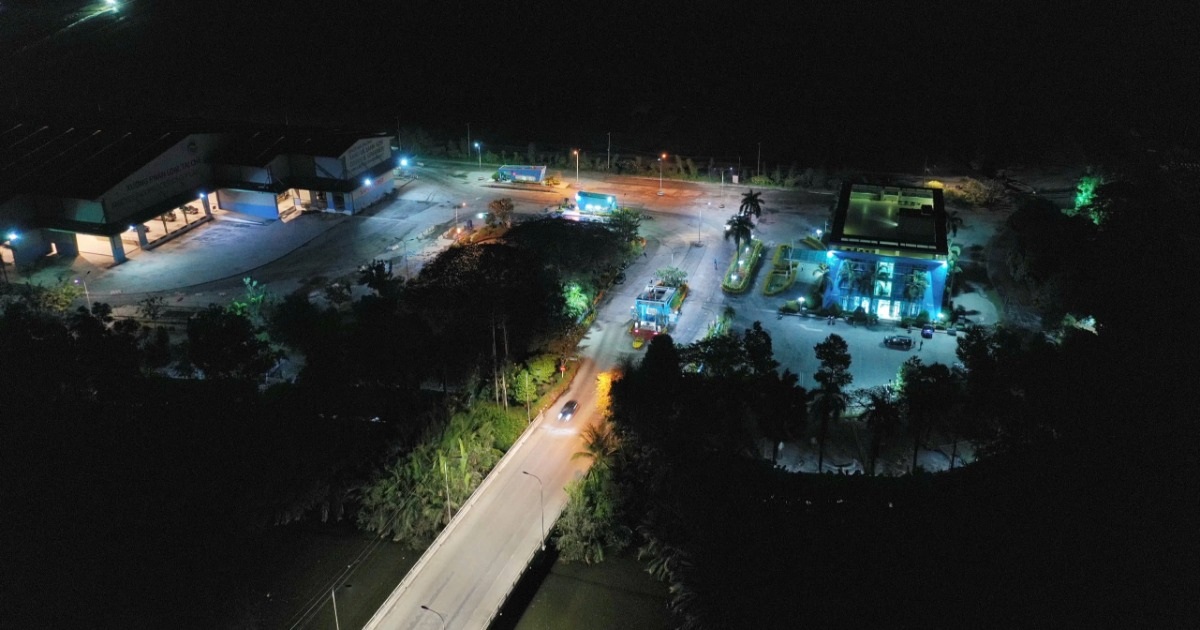On the evening of January 23, Vice Director of the Department of Natural Resources and Environment (TN&MT) of Ho Chi Minh City, Ms. Nguyen Thi Thanh My, discussed with Dan Tri reporters about the waste backlog at Da Phuoc landfill (Da Phuoc Waste Treatment Complex, Binh Chanh District). According to Ms. My, the unit has been monitoring the situation and immediately implementing coordination measures to address the issue.
The congestion began around 7 PM when garbage trucks could not enter the treatment area, leading to prolonged traffic jams.
The road into Da Phuoc landfill is now clear after authorities coordinated efforts (Photo: Trinh Nguyen).
Causes and Solutions
Typically, Da Phuoc landfill operates from 7 PM until the next morning for garbage trucks. However, on the night of January 23, the excessive number of vehicles caused severe congestion. To resolve this, the Department of TN&MT promptly coordinated the transfer of some of the waste from Da Phuoc to the West-North Solid Waste Treatment Complex in Cu Chi.
Representatives from Da Phuoc landfill confirmed the incident and stated that they are closely collaborating with workers, authorities, and related parties to fully resolve the issue.
Current Waste Management in Ho Chi Minh City
According to TN&MT data, Ho Chi Minh City generates approximately 13,000 tons of waste daily. Over half of this waste is processed at the Da Phuoc Waste Treatment Complex, while the remainder is handled at the West-North Solid Waste Treatment Complex in Cu Chi.
Da Phuoc landfill processes over half of Ho Chi Minh City’s daily waste (Photo: Trinh Nguyen).
Over the past 20 years, waste management units in the city have managed and processed more than 30 million tons of waste using various methods. However, under increasing pressure from rising waste volumes, the city is intensifying research and implementation of advanced technological solutions to ensure environmental sanitation and resource recovery from waste.
Future Development and Goals
Ho Chi Minh City aims to process municipal solid waste using modern technology by 2025, with a target of recycling at least 80% of waste. By 2030, the city aspires to achieve a 100% recycling rate.
To realize these goals, Ho Chi Minh City has commenced construction of the Tam Sinh Nghia waste-to-energy incineration plant at the West-North Solid Waste Treatment Complex in Cu Chi. The project spans 20 hectares with an investment of over 4.9 trillion VND, promising to reduce environmental pollution and generate renewable energy from waste.
Conclusion
The waste backlog at Da Phuoc landfill serves as a reminder of the urgent need to improve waste management systems in Ho Chi Minh City. Timely coordination and the implementation of advanced projects like the waste-to-energy incineration plant will play a crucial role in addressing urban waste challenges. Citizens must also enhance their awareness of source waste sorting to support more effective waste processing.
Source: Dan Tri



